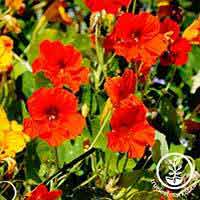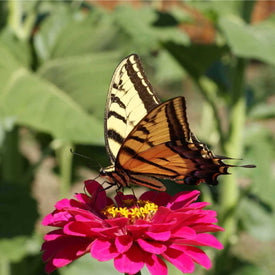Flower Seeds
Here, we have more than enough flowers for every season! Find the perfect assortment of flowers, decorative plants, and ornamental grasses to decorate your garden or yard the way you envision. Use pots, baskets, and other growing containers. The point is it's up to you! We offer a wide variety of sizes for every flower variety, from paper packet to bulk.
All Flower Seed Categories
H
HeirloomO
OrganicA
AAS WinnerF
Staff FavoritesC
Container Growable



 Abutilon
Abutilon Achillea
Achillea Agastache
Agastache Ageratum
Ageratum Alternanthera
Alternanthera Alyssum
Alyssum Amaranthus
Amaranthus Angelonia
Angelonia  Arabis
Arabis Armeria
Armeria Asclepias
Asclepias Asparagus Fern
Asparagus Fern Aster
Aster Astilbe
Astilbe Bachelor Buttons
Bachelor Buttons Bacopa
Bacopa Balsam
Balsam Begonia
Begonia Bellis
Bellis Bells of Ireland
Bells of Ireland Bidens
Bidens Brachycome
Brachycome Calendula
Calendula Calibrachoa
Calibrachoa Campanula
Campanula Canna
Canna Carnation
Carnation Celosia
Celosia Chrysanthemum
Chrysanthemum Cineraria
Cineraria Columbine
Columbine Cleome
Cleome Coleus
Coleus Coreopsis
Coreopsis Cosmos
Cosmos Dahlberg Daisy
Dahlberg Daisy Dahlia
Dahlia Delosperma
Delosperma Delphinium
Delphinium Dianthus
Dianthus Dicentra
Dicentra Dichondra
Dichondra Digitalis
Digitalis Dimorphotheca
Dimorphotheca Dracaena
Dracaena Dusty Miller
Dusty Miller Echinacea
Echinacea Edible Flowers
Edible Flowers Flowering Cabbage
Flowering Cabbage Flowering Kale
Flowering Kale Four O'Clocks
Four O'Clocks Gaillardia
Gaillardia Gazania
Gazania Geranium
Geranium Geum
Geum Gomphrena
Gomphrena Gypsophila
Gypsophila Heliopsis
Heliopsis Heliotrope
Heliotrope  Heuchera
Heuchera Hibiscus
Hibiscus Hollyhock
Hollyhock Hypoestes
Hypoestes Iberis
Iberis Impatiens
Impatiens Iresine
Iresine Kniphofia
Kniphofia Larkspur
Larkspur Lavatera
Lavatera Lavender
Lavender Liatris
Liatris Linaria
Linaria Linum
Linum Lobelia
Lobelia Lunaria
Lunaria Lupinus
Lupinus Malva
Malva Marigold
Marigold Mimosa
Mimosa Mimulus
Mimulus Moonflower
Moonflower Morning Glory
Morning Glory Myosotis
Myosotis Nicotiana
Nicotiana Nierembergia
Nierembergia Oenothera
Oenothera Ornamental Grasses
Ornamental Grasses Osteospermum
Osteospermum Pansy
Pansy Penstemon
Penstemon Perovskia
Perovskia Petunia
Petunia Phacilia
Phacilia Phlox
Phlox Plectranthus
Plectranthus Poppy
Poppy Portulaca
Portulaca Primula
Primula Ratibida
Ratibida Ricinus
Ricinus Rudbeckia
Rudbeckia Salpiglossis
Salpiglossis Salvia
Salvia Scabiosa
Scabiosa Sedum
Sedum Sempervivum
Sempervivum Shasta Daisy
Shasta Daisy Silene
Silene Snapdragon
Snapdragon Stachys
Stachys Statice
Statice Stock
Stock Strawflower
Strawflower Sunflower
Sunflower Sweet Pea
Sweet Pea Sweet William
Sweet William Thunbergia
Thunbergia Thyme
Thyme Tithonia
Tithonia Torenia
Torenia Verbena
Verbena Veronica
Veronica Vinca
Vinca Wildflower Mixes
Wildflower Mixes Zinnia
Zinnia Phytosanitary Certificates
Phytosanitary Certificates 






































